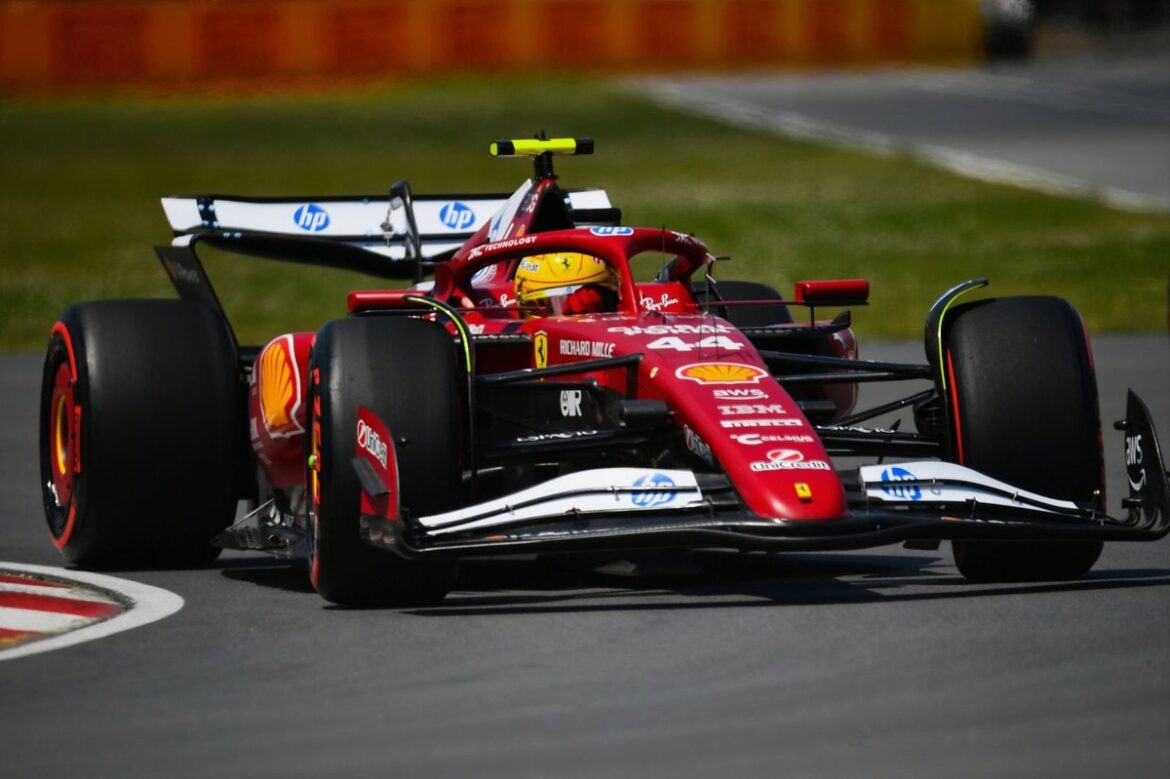Ferrari’s Road to Improvement: Insights from Recent Races
Ferrari, a name synonymous with excellence in motorsport, is currently navigating a challenging phase as the team prepares for upcoming races with a fresh upgrade package. Team principal Fred Vasseur has acknowledged that while improvements are on the horizon, unlocking additional performance hinges significantly on effectively managing race weekends and mastering Pirelli’s tire dynamics.
Challenges Faced by Ferrari in Recent Races
The recent race weekend in Canada proved to be a tough outing for Ferrari. Following Charles Leclerc’s impressive podium finish in Spain, the Canadian Grand Prix was marred by a series of setbacks. It all began with Leclerc’s crash during the first practice session, followed by a critical error in qualifying that saw him struggle with dirty air in Q3. Adding to the team’s woes, Lewis Hamilton encountered an unexpected incident during the race, colliding with a groundhog, which resulted in a noticeable loss of downforce.
Amidst these challenges, Ferrari’s strategic decisions for both drivers came under scrutiny, raising questions about the team’s ability to capitalize on their potential. Hamilton, who qualified fifth, shared his perspective on Ferrari’s need for upgrades to compete more consistently at the front of the pack. He remarked on the importance of fresh developments, stating, "We need upgrades to be able to fight the guys up front."
Despite facing criticism, Ferrari remains a formidable contender in the championship standings. They are currently positioned as the second most consistent points scorer, trailing only behind McLaren and maintaining a slim lead over Red Bull. The team’s ability to secure points is bolstered by having a reliable second driver, which has proven advantageous compared to rival teams struggling with their line-ups.
Upcoming Upgrades and Strategic Focus
Looking ahead, Ferrari is poised to introduce a significant batch of upgrades by the time they reach Silverstone. Vasseur has made it clear that these enhancements are necessary but emphasized that the team’s performance in executing race weekends is equally crucial. He stated, "There is much more in the execution and what you are getting from the car than the potential of the car itself."
Ferrari’s recent modifications have been minimal, with only a slight tweak seen in Imola. However, Vasseur’s optimism about the upgrades is tempered by the reality that the team must also focus on better race execution. The current racing regulations mean that any new parts will likely yield incremental improvements rather than drastic changes, making it imperative for the team to maximize the performance of their existing setup.
The Importance of Tire Management
One of the persistent challenges Ferrari has faced this season is the effective management of Pirelli tires. This aspect is crucial not only during races but also in qualifying sessions. Vasseur has noted that tire usage has presented a hurdle across the grid, and Ferrari has been experimenting with different strategies to gain a competitive edge.
In the qualifying session of the Spanish Grand Prix, Leclerc opted to sacrifice a set of soft tires early in the session to preserve a set of medium tires for the race, which ultimately resulted in a seventh-place start. This decision, while strategic, reflects the ongoing struggle the team has faced in achieving optimal tire performance.
From the season opener in Melbourne through to Imola, both Ferrari drivers have grappled with finding the right operating window for Pirelli’s tires during qualifying. The situation in Imola was particularly dire, with Leclerc and Hamilton qualifying in the lower half of the grid. Such performances have led Leclerc to voice concerns about the team’s ability to extract peak performance from fresh tires.
Vasseur’s Vision for Improvement
Despite these setbacks, Vasseur remains focused on enhancing tire performance as a pathway to improving overall competitiveness. He emphasized that many factors contribute to a team’s success in races, stating, "If the team is doing a very good job on the tires, they will be in front." This insight underscores the importance of teamwork and strategy in the pursuit of racing excellence.
Vasseur also expressed confidence in the team’s ability to adapt and improve. He believes that the characteristics of the car are not the primary issue but rather the execution of race strategies and tire management. He stated, "The main issue is to do a good usage of the tires first and to understand the tires and to choose the good ones for qualifying."
Balancing Development Between Current and Future Regulations
Looking to the future, Vasseur has indicated that Ferrari is committed to continuing the development of their 2025 car, even as the 2026 regulations loom. He believes that there are significant opportunities for improvement on the track that can yield better results than what might be achieved in a wind tunnel. He affirmed, "Today, the issue is not the potential of the car… It’s the execution, the global execution."
With Ferrari’s resources being stretched between two sets of regulations, Vasseur is keen to ensure that the team’s focus remains on optimizing their current performance. He clarified that the division of resources between 2025 and 2026 is not the core issue affecting the team’s progress. Instead, it is about refining their execution and maximizing the potential of their current car.
Conclusion: A Path Forward for Ferrari
In summary, Ferrari is gearing up for a critical phase in their racing season, one that involves not just technical upgrades but also a renewed focus on execution and strategy. As they prepare to introduce new parts at Silverstone, the team’s ability to extract maximum performance from their car and effectively manage tire usage will be pivotal in their quest to challenge for points and podiums. While the road ahead may be fraught with challenges, the commitment to improvement and the pursuit of excellence remains at the heart of Ferrari’s philosophy.
